Order Hymenoptera
Bees, wasp and ants are closely related. It is common to think that bees as sociable insects. However, there are many species of bees which are not sociable. Wasps look like bees, but are usually not highly sociable. Bees and wasps usually have stings1. Bees and wasps have wings, although some might have lost their ability to fly. Ants are flightless except during the mating season.
Bees
Bees are important pollinators. By moving from flower to flower when collecting food, they inevitably bring pollen from one plant to another.
Honey bees (Apis sp.) are well-known for the honey they 'produce'. Honey comes mainly from nectar that bees collect in their stomach. They also collect pollen using pouch in their legs. The hexagonal honey combs are actually made of wax produced from the bees' abdomens. When a bee stings a person, part of the abdomen is disgorged from the bee, due to the barbed sting. As such, each bee can only live to sting a person once.
There are 4 main species in Singapore: Giant Honey Bee (A. dorsata), Black Dwarf Honey Bee (A. andreniformis), Red Dwarf Honey Bee (A. florea) and Asian Honey Bee (A. cerana). The Giant Honey Bee is the largest of the honey bees and has yellow on the thorax and upper abdomen. The Asian Honey Bee is smaller with dark and yellow bands. The Dwarf Honey Bees are the smallest and has distinct black-and-pale bands. The upper abdomen is reddish in the Red Dwarf Honey Bee and black in the Black Dwarf Honey Bee. Giant Honey Bees build huge nests in trees, while Asian Honey Bees nest in crevices. Dwarf Honey Bees also nest in trees, but their nests are much smaller.
Carpenter Bees (Xylocopa sp.) are often mistaken as Bumble Bees. They differ from the latter, by having a shiny abdomen, rather than a hairy one. They are so called they mostly nest in woods. They are mainly solitary. There are 4 main species in Singapore: X. latipes, aestuans, flavonigrescens and caerulea. X. latipes is the largest Singapore bee. Both male and female are all black, except that the male has pale hairy front legs. X. aestuans and flavonigrescens are similar2. Female has yellow thorax, while male is yellow throughout. Female X. aestuans has yellow hair in-between thorax and abdomen, has white cheek, and purple wings, while female X. flavonigrescens has yellow hair on front abdomen, lacks white cheeks, and has green wings. Male X. aestuans has more uniformly yellow with greenish eyes, while male X. flavonigrescens is dark below with dark eyes. X. caerulea has a blue thorax. Male has more blue on the head.
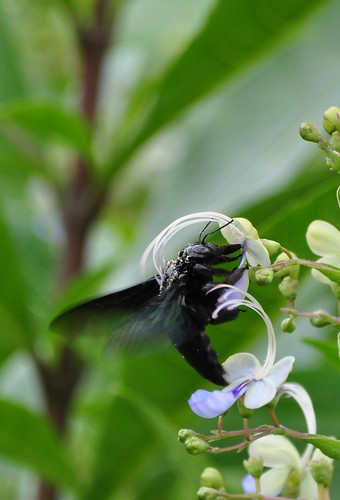

Female X. latipes at Hort Park ©Melvin Dionio and ©Tan GC


Male X. latipes at Jurong Lake. Female X. latipes at Tampines Eco Green ©Lau SY
Stingless Bees are social bees that also make honey. They nest in crevices and are so called because their stings are so reduced that they cannot do damage to human.
Blue-banded Bees (Amegilla sp.) have blue bands on they abdomen.
Cuckoo Bees (Thyreus sp.) parasitizes other bees.
Sweat Bees (Nomia sp.) are small (about 1 cm long) and so called because they are said to be attracted to human sweat.
Wasps
Wasps are often solitary, but there are social wasps too. The solitary ones are famous for parasitizing their preys and burying them with their eggs. These provide immediate food for the young when they hatch. Wasps are capable of multiple stings as their stings are generally un-barbed. Unable to produce wax, the nest-building wasps use mud or chew up wood palps to make their nests.
Family Crabronidae contains some predatory wasps, such as those of the genus Liris.
Family Ampulicidae contains cockroach wasps.
Ensign Wasps (Family Evaniidae) are characterised by the short and thin metosoma that joins the posterior and the thorax. It is solitary and can sometimes be seen indoors, but they are harmless to human. They parasitise cockroach egg cases.
Family Vespidae contains wasps such as paper wasp, as well as hornets. There are a few genera of Paper Wasps - Polistes, Ropalidia, etc. Amongst the Polistes found in Singapore are Banded Paper Wasp (P. sagittarius), P. tenebricosus, P. olivaceus, P. stigma.

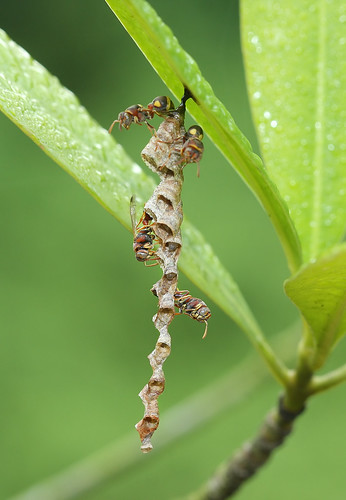
Left: Polistes tenebricosus at Sungei Buloh ©Tan KH. Right: Ropalidia sp. at Chestnut Area ©Eddy Lee
Hornets (Vespa sp.) are an example of social wasps. Their stings can be deadly to human. There are only 3 species of hornets in Singapore3. The Greater Banded Hornet (Vespa tropica) usually nest on the ground, but some do nest in trees. It has an orange band on the abdomen. The Lesser Banded Hornet (Vespa affinis) has two orange bands on the abdomen, while Yellow-vented Hornet (Vespa analis) has an all black abdomen with an orange tip. The latter two both nest in trees. A nocturnal social wasp related to the hornets is Provespa anomala.
Ants
Ants are social insects that everyone is familiar with. They are flightless, unless during mating season.
References
1. Asian Hymenopterans2. Xylocopa aestuans (Hymenoptera: Apidae) Carpenter Bee
3. Singapore Hornets
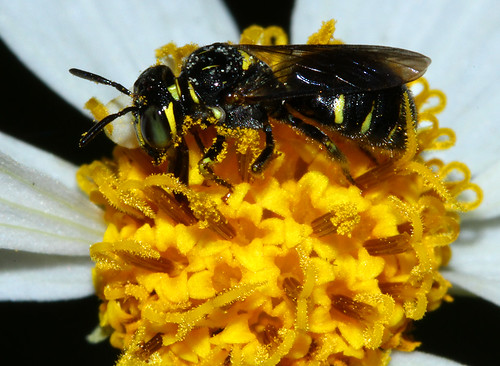


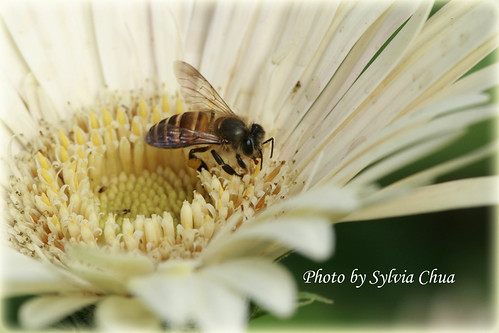
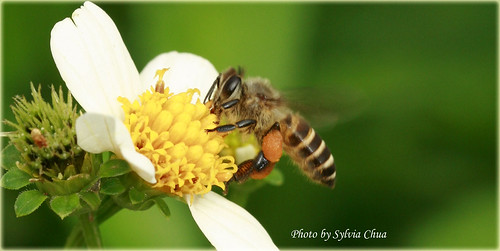
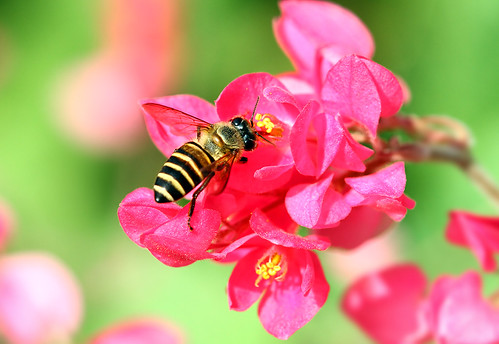



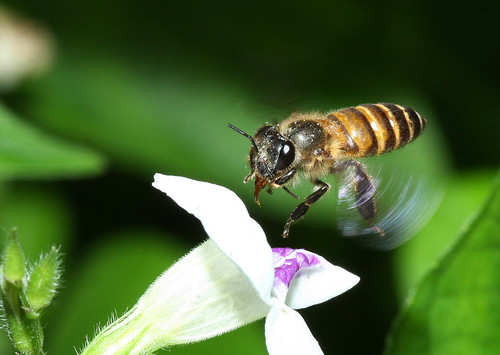



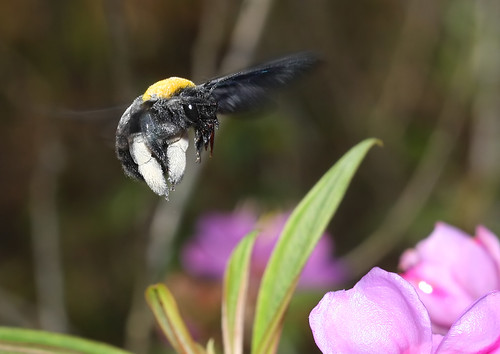
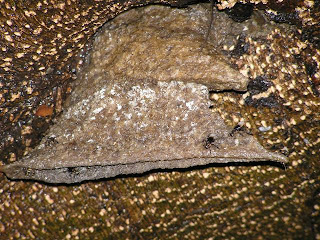

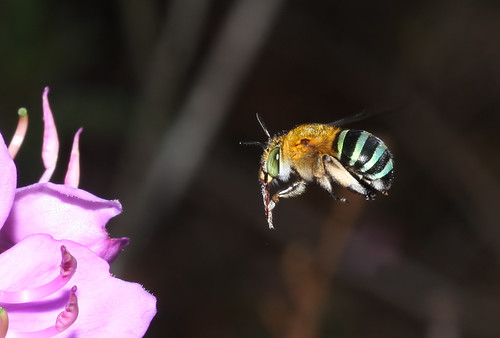

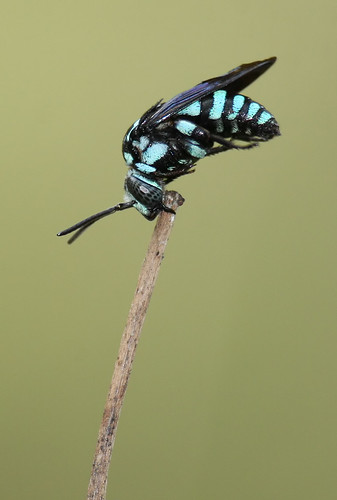


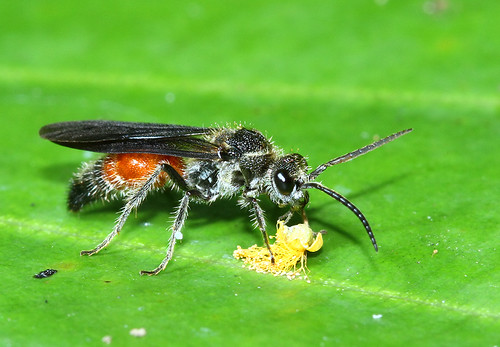
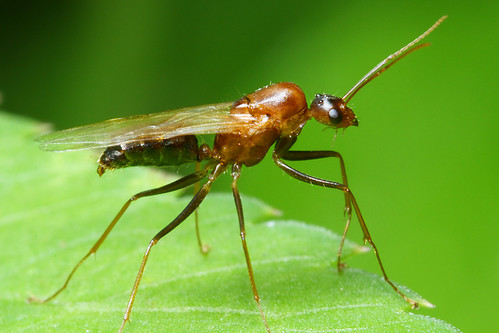
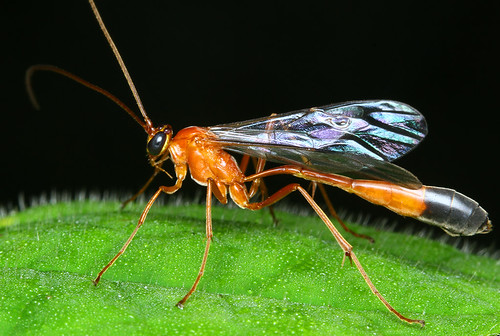
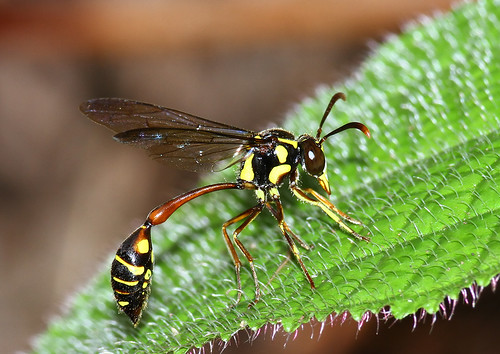



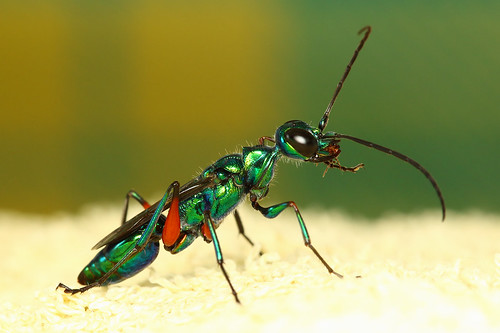
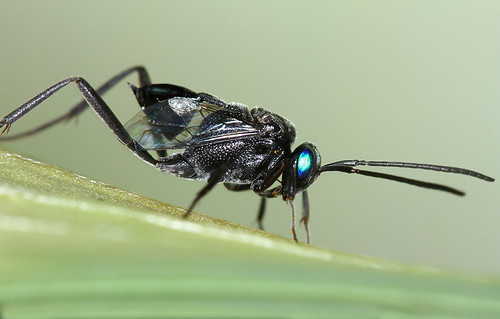
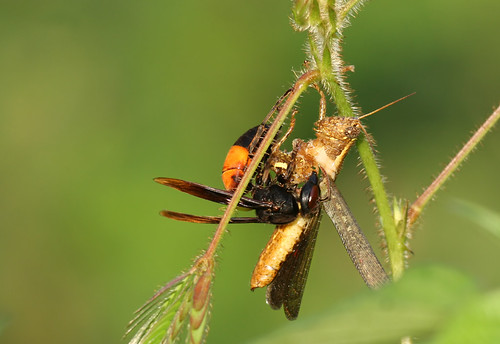



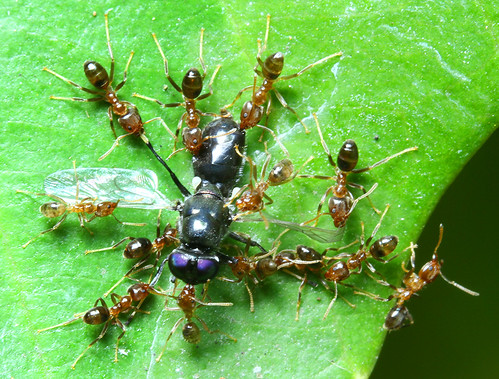
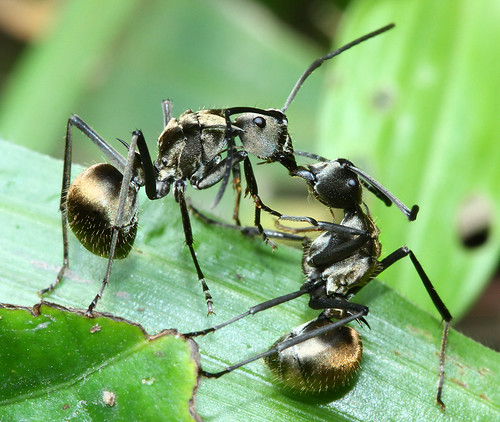
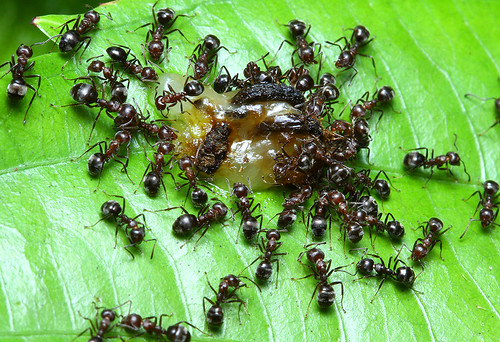
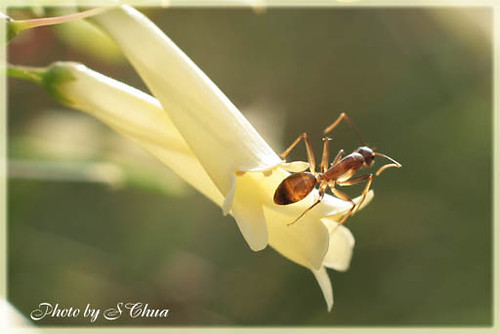



I got stung today!
ReplyDeleteBy what? Bee? Hornet? Wasp?
DeleteFor honey bee the colour of the band actually changes over time. When young the colour is usually much lighter. As over time and when their role changes the colour also turn bringhter. Towards the end if their life when their role switched to guarding bee they normally has a dull and darker band. These are the bees that will initial the attack to their intruders.
ReplyDeleteI dropped a wasp nest
ReplyDeleteThere are many paralysed spiders and 1 larve
I put them all into a container.
The larve is still alive
Anyone wants it?
I got stung today, but I'm not sure whether it's a bee Or wasp. I was on my way home on the bike. And bam! What u saw was, in its small, black and have 2 stripes
ReplyDeleteDo Carpenter bees bore holes in the trunk of trees to make their nests. Some time ago, I had a Melastoma tree with 5 pairs of "Bumblebee" nests in the trunk. I was told there are no Bumblebees in Singapore, but I always think of them as Bumblebees. Same size, same look. rgds.
ReplyDeleteHaven't seen an Emerald wasp since I was a kid, watching it dragging a cockroach many times their size. The only wasp you can see is the "pounding rice" wasp. I don't know the actual name. This is what we called them since as long as I could remember. They are black, very small, less than a cm and I think they don't sting. They will move their backside up and down, hence the nickname by kids then.
ReplyDelete